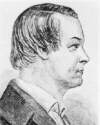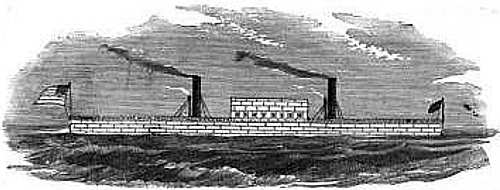 (source)
(source)
|
Robert Livingston Stevens
(18 Oct 1787 - 20 Apr 1856)
American engineer and ship designer , who invented the inverted-T railroad rail, gravel roadbed, and railroad spike to hold the rail to the wooden ties, all of which are now standard on the world's railways. He was the son of the inventor John Stevens.
|
Robert Livingston Stevens
Engineer (18 Oct 1787 - 20 Apr 1856)
born in Hoboken, N.J., son of John Stevens, the inventor.
from Harper's Encyclopedia of United States History (1910)
At the age of twenty years he built a steam-boat with concave water-lines, the first application of the wave-line to ship-building. He discovered the utility of employing anthracite coal in steam navigation in 1818, when coal was about to become an article of commerce. In 1822, he first substituted the skeleton wrought-iron for the heavy cast-iron walking-beam, and in 1824 first applied artificial blast to the boiler furnace. In 1827 he introduced the "hog-frame" for steamboats to prevent their bending in the centre.
Mr. Stevens began the first steam ferriage between New York and New Jersey shores in 1816, and was the inventor of the T rail for railroads. He was a projector of the Camden and Amboy Railroad, and its president for many years. In 1815, he invented an improved bomb for the naval service.

In 1842 he was commissioned by the United States Government to build an immense steam iron-clad floating battery for the defence of the harbor of New York. It was left unfinished at the time of his death, and was bequeathed to the state of New Jersey, and afterwards sold for its materials.
He died in Hoboken, N.J., April 20, 1856.
- 18 Oct - short biography, births, deaths and events on date of Stevens's birth.




